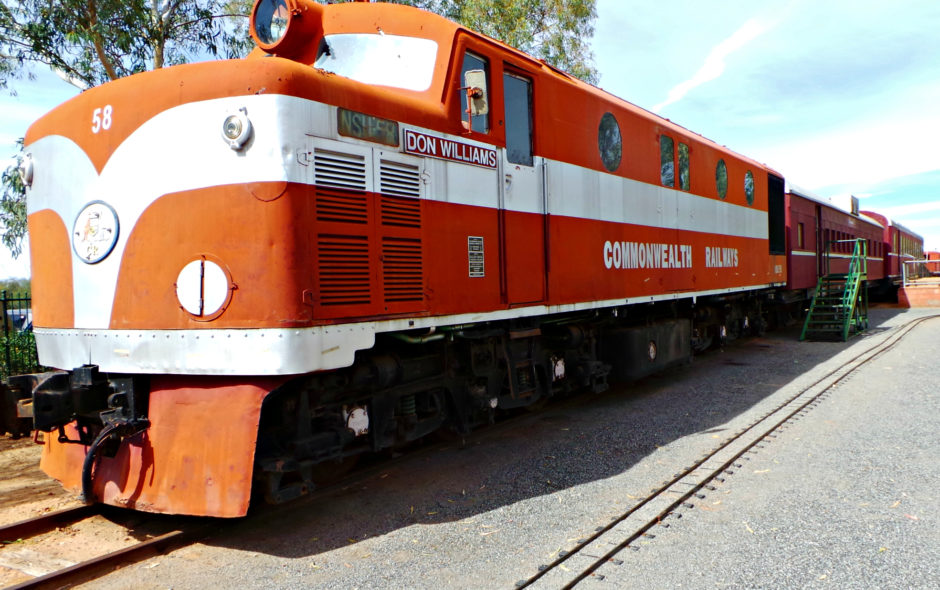The Old Ghan Heritage Railway
Work began on the Great Northern Railway in 1878 to link Port Augusta with Darwin and open-up central Australia. The southern section of the line reached Alice Springs in 1929, and the train running this line became known as “The Ghan”, named after the Afghan camel drivers who had contributed to the development of communication and transport links in inland Australia.
After the Old Ghan ceased running, it was replaced by the “Legendary Ghan” in 1980, and now travels to Alice Springs on a standard gauge railway line from Adelaide via Tarcoola, west of the old track, and can be seen from the Old Ghan Heritage Railway complex as it speeds into Alice Springs. The final link to Darwin was completed in 2001.










The National Road Transport Hall of Fame
In Alice Springs there is the National Road Transport Hall of Fame. It is a wonderful array of vehicles, many that where part of the opening up of Central Australia and is one of the world’s most unique truck collections.
Along with the collection there is the Wall of Fame, which highlights the contribution that road transport, as an industry, has made to the economic well being of Australia through the development of our wealth producing industries and the ingenuity of our trucking pioneers.
Also on show is The Kenworth Dealer Hall of Fame comprises around 11,000 sq ft of display space devoted to the history of the Australian designed and built Kenworth, and the Dealer network that brings this product and back up support to customers across Australia.
























The Story of The Furphy
In 1864, John Furphy established his family business J. Furphy and Sons and Furphy Foundry at Shepparton, Victoria. His steel and cast iron water tanks produced from the 1880s revolutionised the cartage of water for both domestic and livestock use. Previously during dry periods, farm families and their livestock relied on the farmer filling small wooden barrels with water, then carting them on the backs of wagons.However it is the water tanks contribution during the first world war that has ensured the Furphy name was cemented into the Australian language.
The Furphy water carts were typically placed near the camp latrines, which was one of the few places the troops could share gossip and tall tales away from the prying eyes and ears of their officers. The water cart drivers were also notorious sources of information for news hungry soldiers, and despite most of their news being hearsay, or totally unreliable, they spread any snippet of information gathered from camp to camp. To this day, the word furphy is Australian slang for suspect information or rumour.
